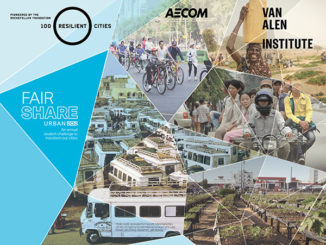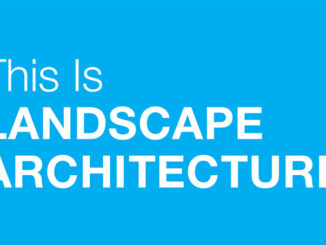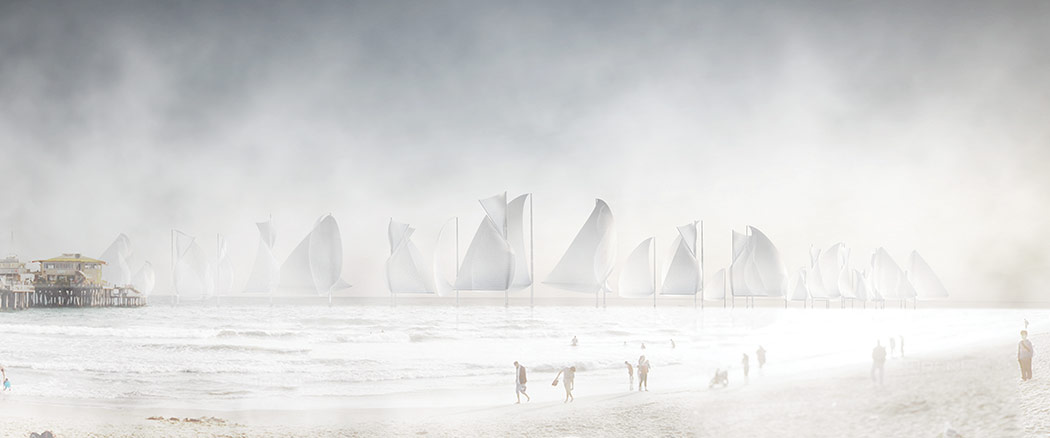
Every two years, the Land Art Generator Initiative international design competition provides an opportunity for creative minds around the world to reflect on the nature of energy infrastructures and what they can aspire to be in their built form. How can they integrate themselves into our cities in ways that enhance public space, educate, and inspire?
LAGI 2016 invited artists, designers, scientists, engineers, and others from around the world to submit proposals for large-scale and site-specific public art installations that generate carbon-neutral electricity and/or drinking water for the City of Santa Monica, California.
The LAGI 2016 design ideas competition, Powering Places, brought forward hundreds of proposals for civic artworks at the breakwater adjacent to the Santa Monica Pier to generate carbon-free electricity and water for hundreds of homes.
The 2016 design site offered participating teams the opportunity to utilize wave and tidal energies as well as wind, solar, and other renewable energy technologies.
According to Elizabeth Monoian and Robert Ferry, the founding directors of LAGI:
The winners of LAGI 2016 all responded to the design brief with elegant site-specific gestures for the cherished coastal landscape of the Santa Monica Bay. These innovative and artistic solutions that employ the latest wave, tidal, wind, solar, and water-harvesting technologies have resonance for coastal cities around the world.
First place winner: Regatta H2O: Familiar Form, Chameleon Infrastructure
by Christopher Sjoberg, Ryo Saito

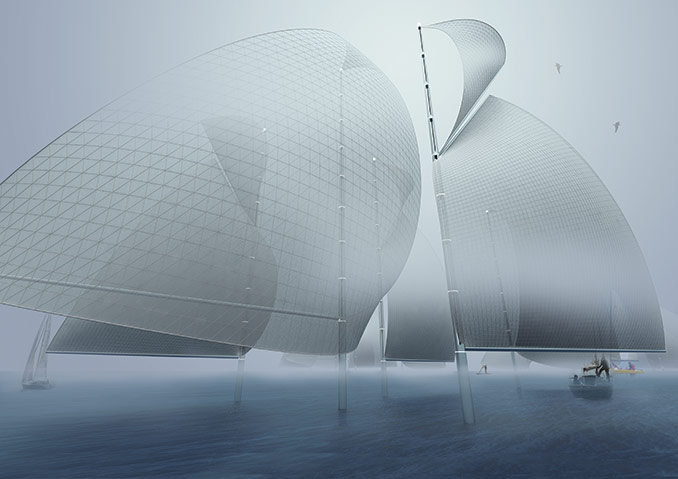
Second place winner | Cetacea
by Keegan Oneal, Sean Link, Caitlin Vanhauer, Colin Poranski
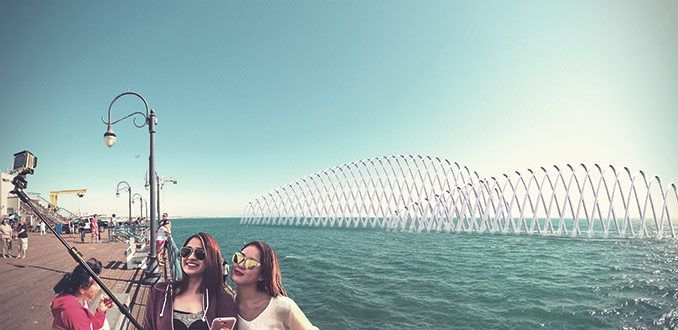
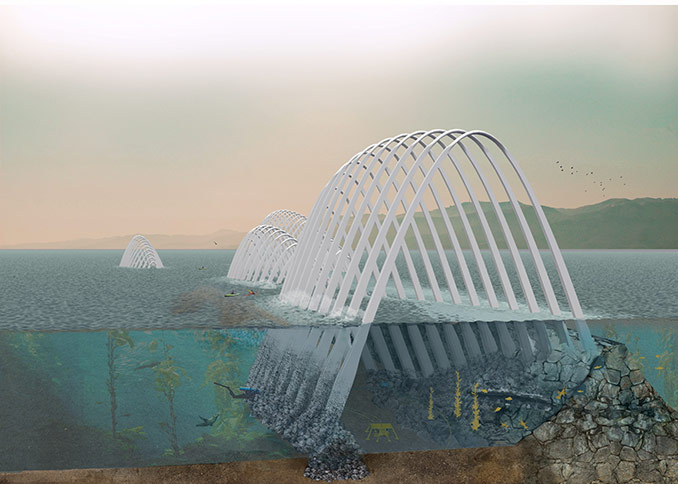
Third place winner: Paper Boats
by Christopher Makrinos, Stephen Makrinos, Alexander Bishop
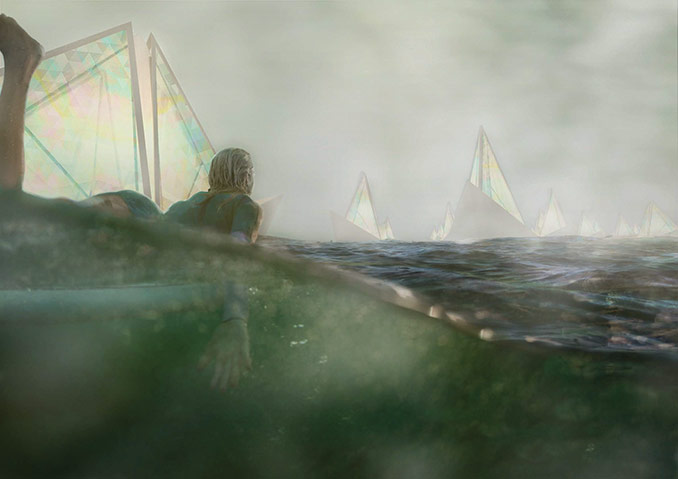
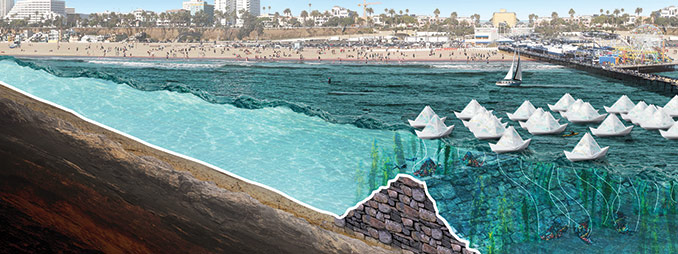
Now, more than ever, energy and water are intertwined. As California faces severe water shortages in the coming years, the amount of energy required for water production and transmission is sure to increase. For this reason LAGI 2016 expanded their definition of sustainable infrastructure artwork to include proposals in 2016 that produce drinking water—either in addition to, or in place of—clean electricity.
LAGI 2016 fits well into the context of the ongoing efforts being made in Santa Monica to increase efficiency of water consumption and to harvest water sustainably. The Santa Monica Pier is currently investigating ways to drastically reduce the use of potable water on site, like the use of recycled seawater for toilet flushing, to take one example.
The City of Santa Monica has demonstrated the ability of sustainable infrastructures to provide an aesthetic and educational amenity for the community through its Santa Monica Urban Runoff Recycling Facility (SMURFF), located just next to the Pier. Visitors to the facility can learn about stormwater runoff, water-borne particulates, filtration processes, and large-scale rainwater reuse at the facility, which treats an average of 500,000 gallons per day of urban runoff (and looks nice too).
LAGI 2016 came to Southern California at an important time. The sustainable infrastructure that is required to meet California’s development goals and growing population will have a profound influence on our visual landscape. The Paris Climate Accord from COP 21 has united the world around a goal of 1.5–2° C, which will require a massive investment in clean energy infrastructure.
LAGI 2016 is meant to provide a positive and proactive vision of how these new infrastructures can be enhancements to our most cherished places. Whether providing clean and renewable electricity to power our homes and automobiles, or providing the clean water so vital to our survival, public services are at their brightest when they can be a celebrated component of urban planning and development.
Images & Text | Courtesy of Land Art Generator Initiative

